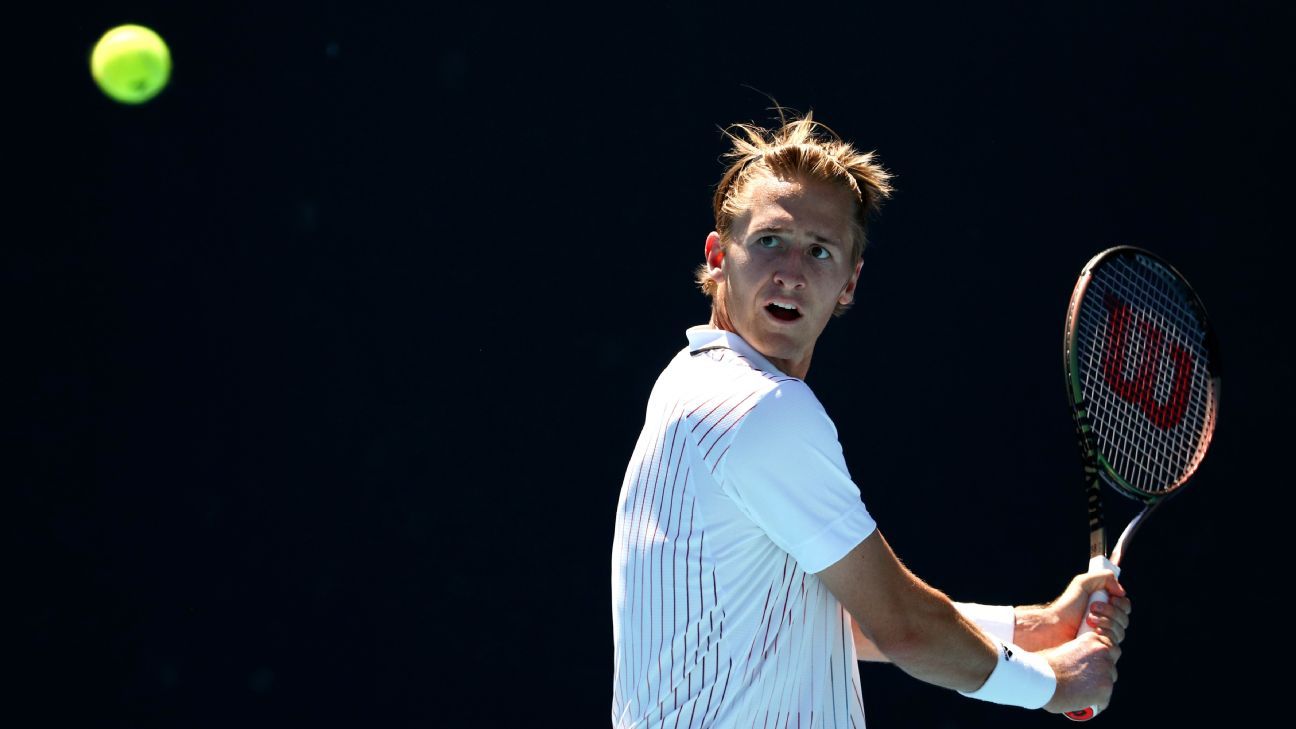There were no Americans in the quarterfinals of the singles draw at the US Open in September.
No men. No women. No one.
It was the first time in over a century of tournament history there had been such an absence, and it was the latest blow for the once-dominant tennis nation. For years, fans and pundits have wondered who, if anyone, could replace Serena and Venus Williams as the face of American tennis and contend for major titles, and while women like Sloane Stephens and Sofia Kenin have won Grand Slams, no one has been able to consistently win on the sport’s highest stage. On the men’s side, the drought extends to Andy Roddick‘s 2003 victory at the US Open.
It’s far too early to know how things will go at the Australian Open, and perhaps the U.S. will again suffer a similar fate in the second week, but maybe, just maybe, there are signs for optimism in Melbourne. There are four women and four men into the third round, and of those, five are under 25.
Those younger players bring a range of experience, potential and résumé. Some — like Amanda Anisimova, who reached the semifinals at the French Open in 2019, and Sebastian Korda, who has twice reached a major fourth round — have already had undeniable success in their careers, but others such as Maxime Cressy are into the round of 32 for the first time at a major. It’s a promising development for the country, and it raises the oft-discussed question:
Has the next generation of American tennis players finally arrived?
Pam Shriver, the 21-time major doubles champion and current ESPN analyst, believes this young crop of players are talented but isn’t quite ready to answer that question.
“It’s difficult because I see excitement over results that in the past would have been seen as mediocre,” Shriver said. “I feel in this era, not so much in the women’s game but in the men’s, it’s like, ‘Oh if we get 10 [American] guys, or 15 guys, in the main draw and eight into the second round, it’s been a good tournament.’ And, no, [to me] we’ve have a good major if there’s a semifinalist and two quarterfinalists, and then the next major is good if one of those players gets to the final.
“I come from an era where it’s really hard for me to get excited about a lot of people in the round of 32 and not beyond.”
But those remaining in the draw will now have their chance to show they can in fact make it further than that and won’t settle for mediocre results either.
Making his main-draw debut at the Australian Open, the 21-year-old Korda soundly defeated Cameron Norrie, the No. 12 seed, in his opening-round match (just days after having to quarantine following a positive COVID-19 test) and followed it up with a tightly contested comeback victory over Corentin Moutet in a fifth-set tiebreak. He’ll next take on Pablo Carreno Busta, the No. 19 seed, on Friday.
“Korda has real potential,” said Shriver. “I don’t think he played a great match [against Moutet] but I love how he handled the situation and found a way to win.”
Cressy, who won an NCAA title at UCLA, made his first ATP final earlier this month in Melbourne, defeating former world No. 3 Grigor Dimitrov in the semifinals before ultimately falling to Rafael Nadal. Cressy, 24, brought his momentum into the Australian Open, defeating fellow American John Isner in five sets in his opening-round match and Tomas Machac on Thursday. He’ll play wild card Christopher O’Connell on Saturday with a legitimate opportunity to keep his Australian summer going.
Reilly Opelka, 24, has won two titles on the ATP Tour and reached the fourth round at the 2021 US Open for his best result at a Slam. As the No. 23 seed at the Australian Open, he’s recorded two straight-set wins en route to the third round, and will take on No. 14 seed Denis Shapovalov on Friday.
Taylor Fritz, also 24, defeated fellow countryman Frances Tiafoe on Thursday, 6-4, 6-3, 7-6 (5), to reach the eighth major third round of his career. He’s never made it to a fourth round, but he will look to do just that against No. 15 seed Roberto Bautista Agut.
Anisimova, 20, won a lead-in tournament during the Melbourne Summer Set and carries a 7-0 record on the year into her third-round clash against reigning champion Naomi Osaka on Friday on Rod Laver Arena. She defeated reigning Olympic gold medalist Belinda Bencic in the second round, and relishes the chance to see how her game compares to some of the tour’s best.
“I just want to see how our games will match up,” Anisimova said about Osaka. “I mean, she’s [a] former No. 1, obviously [a] Grand Slam champion, so, I mean, it will be exciting. I’m just looking forward to it.”
And while Anisimova is the only Generation Z member left among the American women, her fellow remaining countrywomen, Madison Keys, Jessica Pegula and Danielle Collins — all in their late 20s — have all reached the quarterfinals (or better) in Melbourne previously and are capable of making another deep run.
Shriver is hopeful the remaining Americans will advance into the second week in Melbourne but thinks there’s ultimately still much more work to be done for the country to get back to its former glory.
“We’ve been settling for these results for a while, and I think we have to look at why countries like Italy are doing so much better than we are,” Shriver said. “What’s their secret sauce? But meanwhile, the only thing these players can do is the best they can do. I just don’t want them to settle for round of 16s and quarters like it’s an amazing result. I want them to think big.”
